Graffiti in Palo Alto is a force both subversive and adaptive. It perches on trash cans, hangs off fences, parks on cars and wraps itself around local lamp posts, utility boxes, rocks, benches and bike signs. In late January, someone scrawled a profanity and a racial slur on a park table at Cogswell Plaza in Downtown North. A few days later, a person armed with a Sharpie used someone's green recycling bin to launch a concise (four-lettered, to be exact) tirade against the local police department.
Gunn High School gets its fair share of unwanted verbiage, with recent scrawlings appearing near the Bol Park path and by the scoreboard at the junior varsity track field. In most cases, the tag is an alias, an aggressive meme, an insult or a word so opaque that it can only be an inside joke. And unlike most of Palo Alto's built environment, graffiti has largely maintained its decades-old aesthetic. No matter where you find it (and the options are many, particularly downtown), it always bears the rushed, angular, bold, zigzaggy look well familiar to anyone who has ever ridden on BART.
Graffiti has been an aesthetic nuisance for decades, but these days its appearance on Palo Alto streets, cars and playgrounds isn't nearly as interesting as its disappearance. That's because since last summer, at least 114 tags were removed by the city with the help of a newly unveiled and rapidly evolving tool called PaloAlto311. Rolled out in June 2014 as part of the National Day of Civic Hacking, the app allows anyone with a smartphone or tablet to take a photo of the graffiti, send it to City Hall and track its resolution in real time. Each request includes embedded mapping data and ends up on the screen of the employee assigned to the problem as soon as it's filed. It also instantly goes up on the city's Open Data platform, visible to all.
PaloAlto311 is not just for graffiti. In recent weeks, Palo Alto residents used the app to call attention to 80 cases of illegal dumping and 46 problems relating to streets or traffic lights. The app has also been used to bring attention to clogged drains, a malfunctioning electric-vehicle station, anti-fluoridation flyers tacked to a pole on Bryant Street, shopping carts from Safeway and Milk Pail Market loitering in the Monroe Park area, and a "Je Suis Charlie" sticker on a sign near the entrance to the California Avenue bike tunnel. In late January, someone took a photo of a man smoking a cigarette on University Avenue and made a note that one can always "count on" this violation of the city's smoking ordinance.
Last week, the city's Chief Information Officer Jonathan Reichental brought up PaloAlto311 on the computer screen at his temporary office in the mezzanine of City Hall. A few clicks brought him to a map of the city's reported infrastructure problems, with complaint-heavy areas marked in red. Numbers are scattered throughout the map, signifying the total complaints received from each geographic area. Zoom in and the number breaks down into smaller numbers for the different sub-areas. Not surprisingly, some of the densest parts of the city get the most requests, with downtown in the lead by a wide margin, though patches of activity can also be found around Oregon Expressway and east of U.S. Highway 101.
The tool, he said, empowers residents to quickly and easily report issues. Just as importantly, it holds the city accountable. There is no "invisible inbox" where ignored problems languish. When a ticket comes in and hits the cue, the timer starts and everyone can see whether and when the problem gets solved.
In a Jan. 26 presentation to the City Council, Reichental noted that the city has addressed more than 2,000 citizen complaints reported through the app, which he said has about 1,300 users. Not bad, considering PaloAlto311 hasn't even gone beyond the "soft launch" phase. The number is expected to grow significantly later this year, as the city begins to market the app more aggressively and as new departments, including Community Services and Utilities, come on board, Reichental told the Weekly.
PaloAlto311 also has another feature that, in many ways, makes it emblematic of the city's recent embrace of Big Data and mobile apps. It is loaded with metrics, maps, charts and figures. Urban blight like graffiti and abandoned shopping carts may seem like hyper-local annoyances to those who report them, but, as Reichental notes, mapping and tallying all the complaints allows residents, businesses and city officials to see Palo Alto in a new way. With a quick glance at the map, anyone with a laptop or a smartphone can see what effectively amounts to a nuisance map of Palo Alto. Or as Reichental puts it, it gives decision makers the ability to "see the invisible."
"We've never had this kind of visibility before," Reichental said during a recent interview, as he zoomed in on a trouble spot around Lytton Avenue and Middlefield Road. "This is right now what's happening in our city, infrastructure-wise."
The effort to gather, map and analyze data is still in its infant phase, and city leaders themselves don't yet know its policy implications, City Manager James Keene told the Weekly. So far, the focus has been on "responsive, transactional and information-sharing" services, he said. The ability to scale these efforts up and to look for patterns that can shape and influence policy will depend on staffing and conversion of the troves of data into a usable format, he said.
PaloAlto311 is one of about 50 online services that Palo Alto offers to its residents, businesses and customers, a total that has been snowballing since Reichental joined the city in 2011. Already, residents can use their computers, tablets and smartphones to pay parking tickets, browse library materials, track building permits, get alerts about new developments in their neighborhoods, report code violations and non-urgent crimes (for emergencies, dialing 9-1-1 is still recommended), scrutinize the city budget, register for swimming and camping classes, print out tickets to a Children's Theatre performance, apply for energy rebates and get instant information about any tree, land parcel or manhole cover. They can use the online Open City Hall platform to opine on an issue that the City Council is about to discuss. Those who wish to make their case the old-fashioned way, by going to City Hall, can of course still do so, though they now have the option of filling out their speaker card online, well in advance of the meeting.
Tools like PaloAlto311 in many ways encapsulate City Hall's shifting attitude toward technology and its growing excitement about the potential of Big Data to tackle problems large and small. As the city's first chief technological officer and the architect of the open-data push, Reichental is leading this charge. At his January presentation to the City Council, Reichental made a pitch for technology and data collection as a critical tool for solving some of the city's most pressing problems.
"We are producing an enormous amount of data today as a society," Reichental told the council. "We are now firmly in the petabyte era -- that's the one with lots of zeroes. So we're producing data that should be able to help us make much better decisions as individuals, as families, as communities, as cities and as countries. And we should be able to make better predictions where things are headed if we use that data really wisely."
Traffic signals, for instance, can be made to change lights "when they should and not on a time basis," Reichental said. New technology can also help people "find parking spaces without having to drive around the block 50 times."
Though Reichental praises data's propensity to spawn creative solutions and tell stories that would otherwise be untold, outside City Hall, the term "Big Data" rarely evokes this type of adulation. Libertarians shudder when they hear about the National Security Agency's surveillance programs that search for patterns in people's phone data; shoppers steam when they hear about the latest hacking attack in which thousands of credit card accounts or Social Security Numbers were compromised; and regular Internet users sigh in exasperation as they get bombarded with pop-up ads relating to their last Amazon purchase on every website that they visit. Not every citizen yearns to be a data set; some, like Greta Garbo, just want to be left alone. When Palo Alto in 2010 unveiled OPower, a tool that compares a resident's energy consumption with those of other homes in the neighborhood (the tool was expanded in 2012 to include a social-media component), some thought it was an over-reach. One utilities customer described it on Town Square, the PaloAltoOnline.com discussion forum, as "Big Brotherish," and others argued that it's a waste of money or a heavy-handed attempt at "social engineering" by City Hall.
In some cases, the new tools just don't catch on. Open City Hall made its debut in 2008 and, after initial enthusiasm, petered out because people weren't using it. Two years later, the city partnered with the company rBlock to encourage neighborhoods to create their own social networks, but that partnership also didn't gain much momentum. Instead, residents gravitated without the city's assistance toward Nextdoor, a social-media company with a similar objective. The website has grown in popularity without any prodding from City Hall (it now has about 8,700 users in Palo Alto), though officials now occasionally chime in on discussion threads.
The thin blue network
No one at City Hall has been as effective in surfing the social-media wave as Lt. Zach Perron, the police department's seemingly omnipresent public-information manager. The department's Twitter account (@PaloAltoPolice) has more than 10,000 followers and its activity and wide range of tones seem perfectly suited to the social-media era: a fusillade of traffic alerts, mugshots, links to press releases and quirky photos with witty captions (Reichental noted that it's pretty "gutsy" for a City Hall employee to deploy humor on Twitter, where backlash can be merciless).
The Palo Alto Police Department, Reichental observed, may be the only police department that has the Twitter handle on the back of police cars. It may also be the only one in which every press release ends with a link to the department's app (called Palo Alto Police Department), which can be used to receive alerts, view crime trends and file reports.
Over the past two years, Perron has taken his followers on Twitter ride-alongs and used the medium to issue traffic advisories and post retro photos from the department's archives. Last week, sandwiched between a press release about a creepy photographer in a Cubberley Community Center bathroom and a warning about Internet safety, there was a photo of Mickey Mouse on a motorcycle, getting patted down by a highway-patrol officer ("Someone must have a funny caption for this," Perron's meta-caption states). Last August, he live-tweeted an incident in which an elderly driver crashed into University Cafe, injuring six people. It made no difference that at the time of the incident, Perron was on a family vacation in Seattle.
During December's brief period of storms, the department's Twitter account was a hive of activity, providing residents information on creek-water levels, sandbag locations and road closures. And on Feb. 8, when an evening power outage in Barron Park disrupted residents' Grammy Awards plans, both Perron and Catherine Elvert from the Utilities Department took to Twitter for lively banter and updates about the outage. At one point, Perron tweeted the department would "offer to live-tweet the #Grammys2015 results for you, but some might not want the surprise ruined. ;)" The two departments got some kudos from the Twittersphere for joining the conversation and providing some Sunday night entertainment.
In a recent interview, Perron ticked off the many reasons why social media has become such a high priority in the department. What began with a desire to release emergency information to the public evolved into a two-way street in which residents increasingly offer feedback, report complaints and see local officers during their lighter moments.
"If we can showcase the fact that we're willing to laugh at ourselves, we're willing to laugh at the things that the community is laughing about, we're happy to do it," Perron said.
This message, that the department is "part of the community," is an end in itself. But it also aligns with Perron's greater mission: to get as many followers as possible so that when disaster strikes, the department can quickly mobilize its response and get the message out to both the media and the public at large.
"We want as many people as possible to be able to get that initial critical public-safety message when it's the Big One," Perron said. "If it's a massive quake, if it's a flooding, if it's a school shooting, a poisonous gas leak, or a hazardous-materials incident, we're going to be there and we're going to be giving instructions. We want people to get that first critical message directly from us."
The rest of the nation has taken notice. Last year, Perron served as the visiting fellow at the International Association of Chiefs of Police, a nonprofit for police executives. As part of the program, he flew to Florida in October to spread the gospel of social media and share tips for engaging the community through social media with other police departments.
Fire Chief Eric Nickel has also upped his department's social-media presence. Neighbors and rubberneckers curious about all the fire engines buzzing around the 200 block of El Verano Avenue on Feb. 9 needed to go no further than the department's Twitter page, which cited a kitchen fire. As soon as the work was done, the department tweeted out: "Fire is under control. Crews confined fire to a dishwasher."
These tweets serve several important functions, Nickel told the Weekly. They allow the department to directly announce incidents in progress and thus inform residents to avoid certain roads (not to mention, satisfy our natural voyeuristic tendencies). It's also a quick way to reach out to other information spreaders: news outlets and neighborhood groups.
"We're breaking news, even as we're mitigating it," Nickel said.
The other huge purpose of the department's social-media effort, he said, is to reduce the risk of fire. The department likes to include on its posts links to other sites where residents can get information about fire-safety measures, whether it's from the Office of the State Fire Marshal or CalFire.
Throughout the organization, the city now has more than a dozen Facebook and Twitter accounts, as well as at least nine YouTube accounts and five Pinterest feeds (the city's Library Department and Art Center are among the users of the lattermost). Not all are success stories. Some accounts lay dormant for months and some departments do nothing at all with theirs. In most cases, that's to be expected. City Hall simply doesn't have the kind of viral charisma of, say, a puppy playing the piano or Kim Kardashian being herself. And some departments are, by their nature, more closely tailored to social-media success than others, such as the Office of Budget Management.
Reichental doesn't realistically expect people to rush to the city's Facebook page or embrace all of its digital efforts. But that doesn't deter him in the least. This is, after all, Silicon Valley, where failure is just a different form of success. Take Twitter Q&A, a series of events that the city hosted in 2012 in which residents had a chance to chat via Twitter with City Manager James Keene, then-Mayor Yiaway Yeh and Reichental. The reception was underwhelming, with only a few people participating and long periods of silence. One lesson from the exercise, Reichental said, is that "only a very small part of the community is technologically engaged at all times." So the city shifted its energy elsewhere.
"Just the fact that it didn't work is still valuable to us," Reichental said.
Even the best tools have their dark side. PaloAlto311, for instance, may be useful for reporting graffiti, but the platform also in a sense extends its shelf-life. At his office, Reichental clicked on one complaint and, after a few keystrokes, an image of a green composting bin popped up. Scrawled on the side of the bin was an obscenity directed at the Palo Alto Police Department. The problem has already been fixed in the real world, but in the cluttered digital world, it's still there. The city currently has no policies in place relating to data retention on PaloAlto311. One can easily make an argument that some images don't merit preservation, but from Reichental's perspective, a user's ability to see what's happening around the city, warts and all, is "what transparency is all about."
"Sometimes you don't like what you see," Reichental said. "But that's freedom."
Out of the maze
When Reichental came to Palo Alto in 2011, City Hall was an analog island in a digital sea. The city's clunky website was a community laughingstock, its phones were more than three decades old and City Hall had no social-media presence or WiFi access. A former CIO of O'Reilly Media (publisher of the landmark 1984 book, "Hackers"), Reichental came in as the radical outsider keen on turning Palo Alto into what he called a "leading digital city." In addition to his meat-and-potato duties (updating software, improving cybersecurity, keeping the computers running and managing a 32-person department with an $11.8 million budget), Reichental began to oversee a technological makeover that included, among other things, replacing old desktops with laptops and tablets (75 percent of the workforce has already been converted), breaking down walls between cubicles in his tiny domain on the second floor of City Hall, installing WiFi at all city facilities, and working with department heads on expanding the city's social-media services and amassing an arsenal of civic-minded apps.
In 2013, he spearheaded the National Day of Civic Hacking, a downtown tech festival that attracted 5,000 visitors and earned him an invitation to the White House. Last year, he spent five months coordinating the Palo Alto Apps Challenge, a contest in which 74 different teams submitted apps aimed at improving civic life. The contest culminated in an American style-event in which people voted for the winning app and the top three teams won prizes (Read Palo Alto looks to citizen hackers for civic solutions). Reichental said he is now in the final stages of writing a playbook for hosting app challenges so that other cities can follow Palo Alto's example. Once completed, it will be published on the city's website and made available for free to anyone who is interested.
In amassing its new array of digital tools, he got plenty of help from the ecosystem of startups blooming all around the city. In the fall of 2012, the city partnered with a local startup called Delphi Solution (later renamed OpenGov) to release Open Budget, a tool that transforms the 350-page annual budget document into an interactive online tool that lets users break apart budget data by funds and departments, organize it in charts and graphs and compare it to prior years. Open Data, the platform that allows users to map 3-1-1 trends and other data sets, was created in 2012 through Palo Alto's partnership with the company Junar. The city followed that up in 2013 by releasing PaloAlto311, which came through a collaboration with the software firm PublicStuff.
So far, these partnerships have been forged in a typical Silicon Valley fashion: informal meetings, ad hoc conversations, spontaneous pitches. Now, Reichental looks to change that by adding more structure -- literally. During an interview last week, his comments were occasionally punctuated by the beat of hammers directly above him, where workers were in the final stages of building the new Civic Technology Center.
By design, the new technology wing looks like no other in City Hall. In fact, it aims precisely to look as little like the rest of the building as possible. Located on the second floor, in a space that until recently had resembled the typical Dilbert-style maze of cubicles, the wing will have two "focus rooms" where entrepreneurs can meet with city employees and brainstorm ideas for collaborations. It will also feature a Genius-style bar where employees who need tech support will be able to get it.
"The impression that people will get when they walk in here is that they're entering a Silicon Valley startup," Reichental said during a tour of the work site. "It will look and behave exactly like that.
"This will be a surprise not only to the community, but also to other cities that visit -- other CIOs and managers. I expect that the city manager will bring people to show them: This is what civic technology looks like."
The new technology center is one piece of a somewhat controversial $4.5 million renovation of City Hall that the City Council approved last year. The center comes at a cost of nearly $500,000, with the money coming from the budget's Technology Fund -- an account that gets regular contributions from other City Hall departments. If City Hall is by-and-large a bureaucracy wedged inside a startup culture, the new center will be the startup culture wedged within that bureaucracy. For visitors, the symbolism of what the city is trying to do will be impossible to miss.
Though the Civic Technology Center is a relatively modest component of the grand project that many in the community criticized as being a bit too extravagant, Reichental is mindful of these criticisms. After mentioning that there will be coffee and snacks in the new tech center, Reichental quickly added that these would not be paid for with taxpayer money.
So far, he's had little trouble swaying others in City Hall that open data is the way of the future. His pitch to make more data available to more people has found a willing audience in the City Council, which in 2013 and 2014 designated "technology and the connected city" as a top priority.
Keene has also been a staunch supporter of the open-data push. At the Jan. 26 meeting, he credited Reichental with helping the city keep up with the rapidly changing technological landscape.
"The space has accelerated but we have kept up with it," Keene said. "There is a kind of synergy and multiplier effect from the work Jonathan does."
The city's effort hit a symbolic milestone in February 2014, when the council unanimously passed a resolution that commits the city to working "towards a future in which important government data and information will be Open Data by default." Immediately before the unanimous vote, Reichental praised the resolution as an important milestone and the drive toward open data as a critical initiative.
"This is a technology-related initiative that best aligns with all our city efforts -- our democracy, building community trust and, later, economic opportunities," Reichental said.
To further move the initiative along, the council last month approved contracts for two separate master plans: one geared toward establishing a citywide wireless network; the other toward finally implementing the long-discussed "fiber to the premises" system, which would expand Palo Alto's existing fiber-optic ring and bring ultra-high-speed Internet to the city's masses.
The twin efforts will add to what promises to be a busy year for Palo Alto's increasingly enterprising IT Department. Reichental listed 41 projects currently in the works and 27 in the cue in his update last month to the council, which won rave reviews. Councilman Greg Scharff said it's rare for people to outline a "cogent vision" of where they're going and actually getting it done and called Reichental's accomplishments "very impressive." Mayor Karen Holman gushed about Open Budget, which she called "an amazing, fabulous tool" that the city should utilize during its budget cycle. And Councilman Pat Burt lauded Reichental for the department's "commendable transformation," which has already netted Palo Alto a steady stream of national awards. Last year, the Center for Digital Government named Palo Alto a "leading digital city" for the second year running.
"I think as council members we really appreciate the opportunity to take credit for all the great work that you've been doing," Burt quipped.
Vice Mayor Greg Schmid, meanwhile, pointed happily to the changing tone and momentum of the civic discourse in recent weeks on Open City Hall. A recent question about what priorities the City of Palo Alto should adopt in 2015 attracted 185 responses, with most of them consisting of a small list. Schmid said he has noticed that in recent years he has been "getting substantially more input from a greater variety of people on every issue."
"What's striking to me is that the interactions we're getting are increasingly in detail -- a thoughtful representation of an issue," Schmid said "It's really an improvement in the quality of interactions."
Reichental, for his part, isn't ready to take a bow. Even as Open City Hall gains usage, its implications for policymakers are far from clear. It's encouraging that 470 people visited the page asking them about the council's priorities, but one might wonder (as Reichental does) how well this group represents a city with a population of more than 60,000.
"I don't think that we yet know if something like Open City Hall really works," Reichental said. "There is a digital divide component -- does it exclude people, potentially? I think the debate is wide open."
But he's happy to keep exploring and adding tools, social-media accounts and data sets -- all with the goal of getting, mapping and spreading information.
Palo Alto's push toward more mobile apps, data sets and crowdsourced solutions is expected to only accelerate in the months to come. The world, Keene said, is "increasingly mobile and that's where we see we need to be." Today, this means removing graffiti. In the future, this could apply to areas like utilities, sustainability and transportation -- make it easier, for example, for people to get around without cars.
Keene said he doesn't believe that the city can succeed in solving many of its problems and enhancing the quality of life without the "active involvement of citizens." The new data tools aim to foster this involvement and hopefully will lead to some practical solutions down the line.
"We need to be skating to the puck, as Wayne Gretzky would say," Keene said. "The ability to crowdsource data -- consciously and not secretly -- will let us generate new data in a way that the city never can."
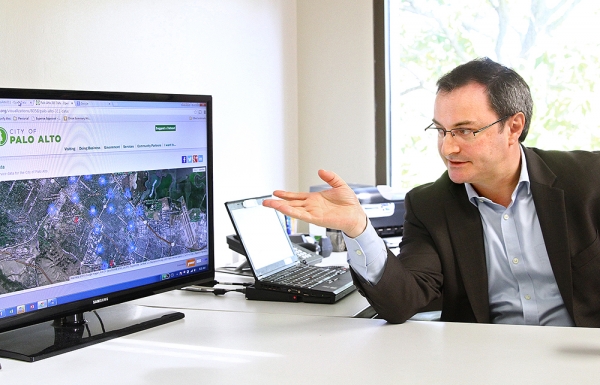
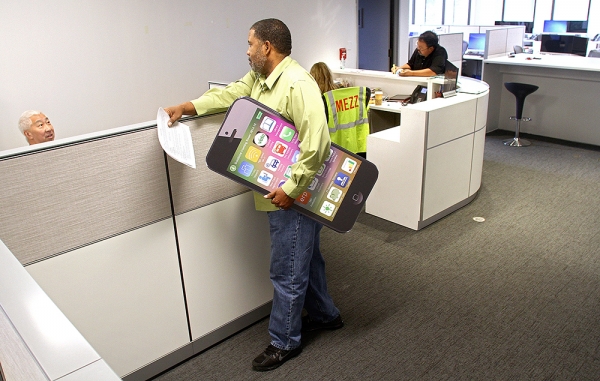
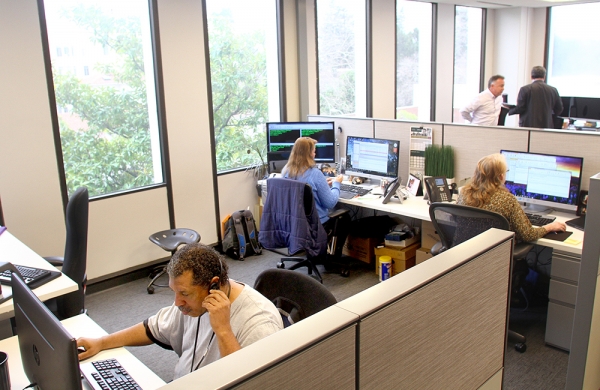
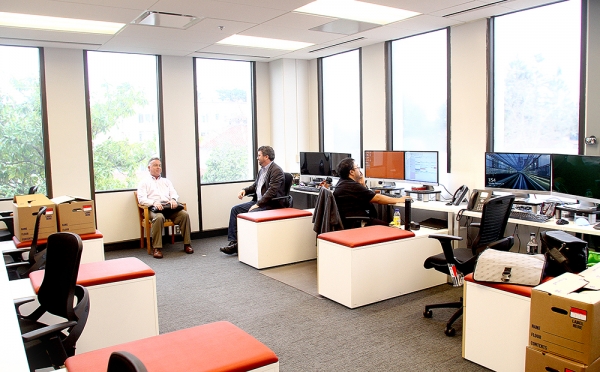

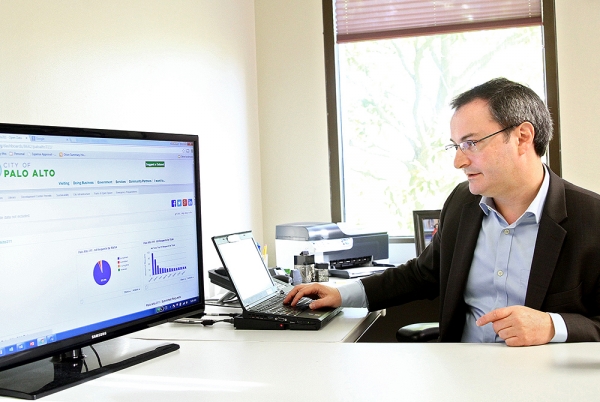
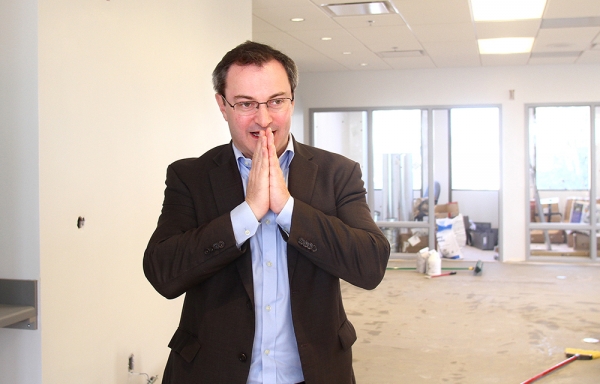
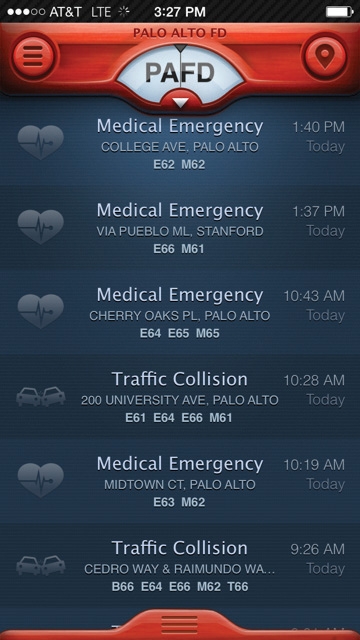
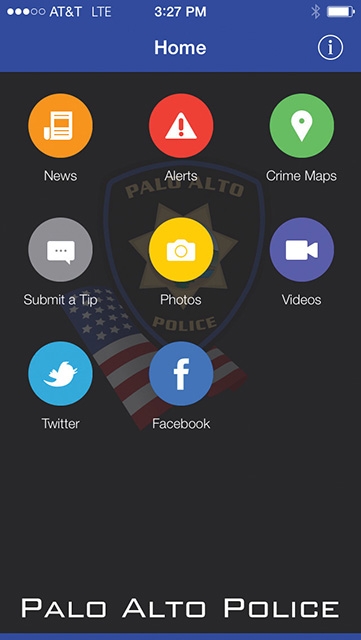
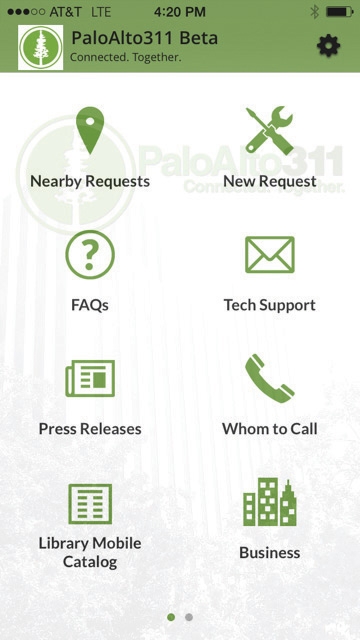

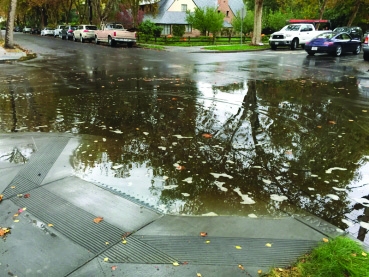
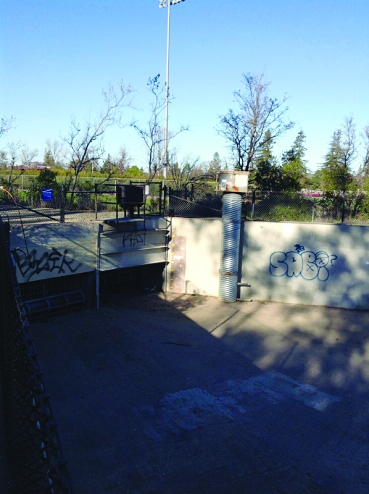


Comments
Palo Verde
on Feb 20, 2015 at 11:11 am
on Feb 20, 2015 at 11:11 am
Wow a 5,000 word sales pitch.
What about the daily news???
Downtown North
on Feb 20, 2015 at 11:35 am
on Feb 20, 2015 at 11:35 am
Too bad Reichenthal is often gone from the city and traveling all over the world padding his resume.
It's great that we have become a digital city what's too bad is sometimes the internet at city hall doesn't work, sometimes the phones go down in the middle of a call, and of course the employees would just like their computers to work or get some timely IT support when they don't. External features may be great but internal support serious lacks.
Downtown North
on Feb 20, 2015 at 5:39 pm
on Feb 20, 2015 at 5:39 pm
I think that PaloAlto311 is a really great tool and will help with reporting issues and hold the city accountable for seeing them through.
College Terrace
on Feb 20, 2015 at 5:52 pm
on Feb 20, 2015 at 5:52 pm
Can this tool be used to report gas powered leaf blowers in residential neighborhoods? Also parking violators late at night? I want to have a record of calling them in.
Crescent Park
on Feb 20, 2015 at 8:54 pm
on Feb 20, 2015 at 8:54 pm
Meanwhile, the City of Palo Alto can't replace a stretch of sidewalk properly after months and millions.
See this paper's Calif. Ave. article.
College Terrace
on Feb 21, 2015 at 8:18 am
on Feb 21, 2015 at 8:18 am
In response to the comment by Really in Downtown North, your information is not current. Here is the actual data: 94% of City staff rate technology services as excellent in regular surveys. In the last year alone, the time to respond to and address a staff technology need has been cut in half. In addition, reliability performance on over 300 technology solutions is close to 100%. In the past 2.5 years, the City has delivered over 77 technology projects, which have included a new telephone system and both a new wired and WiFi network, and almost 75% of staff have new laptop computers. The City is now managing and delivering more technology projects to support City functions than it has in its history. You can find more information on the City technology services and performance at this link: Web Link
College Terrace
on Feb 21, 2015 at 10:37 am
on Feb 21, 2015 at 10:37 am
"Really" brought up insight that might "still" be invisible to people higher up like Reichenthal, and "Factual" shows a bunch of numbers in the response without the details (or even an acknowledgement of a possibility of the issues).
1) About the survey, if the 6% of city staff who did not rate IT highly are in critical operations that serve the welfare and safety of the public, then the 94% approval is not an impressive score in my view as a resident of Palo Alto.
2) The time respond to address a staff technology need was cut in half - sounds good. But, does the report also shows the number of tickets or the number of times IT staff changed the due dates to manipulate the outcome? It is a common practice when KPIs are collected to measure performance.
3) The phone project was done. Was it done completely? If there are still complaints, there are still rooms for improvement, don't you agree?
4)75% of staff got new laptops. And there is a complaint about "employees would just like their computers to work". Maybe the complaint is about the new roll-out laptops? Are there any reports of how many tickets/ type of tickets related to the new laptops roll out? How long does it take to resolve each issue = loss of productivity of employees during the new laptops roll out.
IT has done a better job in communicating what they do "than it has in its history" (ahem, Factual's language). This article is an example.
I hope my way of reading the numbers/ data will not offend "Factual" or any IT staff who reads this comment. Palo Alto is a community of high achievers. We look into complaints to better ourselves and improve our business.
JMHO.
Fairmeadow
on Feb 22, 2015 at 12:45 pm
on Feb 22, 2015 at 12:45 pm
> Can this tool be used to report gas powered leaf blowers in residential neighborhoods?
Yes and no. The so-called "soft launch" (which started over a year ago) only dealt with P/W issues. Suggestions to Staff pointing out that there were a lot of problems here in PA that exceeded the domain of P/W were answered: "We get around to adding additional topics in due time" (or words to that effect). I don't think at this point that they have actually upgraded the site to deal with other issues yet.
That said, the people responding to the postings have, on occasion, forwarded complaints/problems to the appropriate departments for response. So, you could try to post such a complaint and see what happens.
I believe that the Police would be the responding department. In that case, they already have an on-line reporting mechanism on their web-site. Why not give that a try first?
Fairmeadow
on Feb 22, 2015 at 12:58 pm
on Feb 22, 2015 at 12:58 pm
> Here is the actual data: 94% of City staff rate technology services as
> excellent in regular surveys. In the last year alone, the time to respond to
> and address a staff technology need has been cut in half.
Here is a link to the IT “metrics” page—
Web Link
While the metrics only show a two year timeframe, at least some real numbers are available for the public to see what the IT department is doing.
There is a lot of information that isn’t on this page, so we are left guessing as to how good the CPA IT department’s service really is. For most office workers, if they are lucky, they don’t have to call on IT for much. That said, software updates, virus removal, connectivity problems, hardware failures, and so on require the services of an IT person. One metric that is impressive is: time between reporting a problem and closing the problem successfully.
Issues with SAP have been rumored for years. Without some reporting on SAP, it’s not clear if the public is being fully informed by this metrics page.
At the least, this is an improvement over previous years.
Midtown
on Feb 22, 2015 at 8:28 pm
on Feb 22, 2015 at 8:28 pm
This app has been available since last summer. I've used it a couple of times to report petty issues, like broken water fountains in parks, and the city did fix the problems pretty quickly. I also tried using the app to report serious safety problems like cars illegally parked in bike lanes, but I just got a response that the problem was too serious for them and I should call the police instead. Really a shame that the app has such limited usability. Why can't the city have a one-stop app for all issues (other than 911)?
Downtown North
on Feb 26, 2015 at 1:02 pm
on Feb 26, 2015 at 1:02 pm
Link to the CIO's Speaking engagements. You should try to attend ;-)
Web Link